Booster pump for hot water. How to choose a booster pump for plumbing
The main purpose of booster pumps is to create optimal pressure in plumbing, heating and sewage systems. In suburban homes with several floors and equipped with autonomous systems and modern household appliances, units that increase pressure cannot be dispensed with. Boost pumping equipment is available exclusively with a wet rotor. This arrangement ensures the noiseless operation of the device and increases the period of trouble-free operation.
Even the simplest models of equipment are able to provide a water pressure sufficient for the trouble-free operation of household appliances in the house, as well as the circulation of the coolant in heating systems.
Pumps to increase the pressure of water in the house
- with manual control.
- automatic.
Manual control allows for continuous operation of the device, while shutting down is also done manually. Automatically controlled models have flow sensors that trigger when the tap is opened and turn on the unit. At the moment of blocking the flow, the sensor switches off the unit. In addition, this equipment can be of horizontal and vertical type.
How to choose a boost pump
Having decided to buy a booster pump, pay attention to its advantages:
- the ability to work with environments whose temperature varies from -15 ° C to + 100 ° C. However, in order to extend the life of the device, it is recommended to use it at a temperature not exceeding + 40 ° C. low noise, compact size and light weight;
- low power consumption (for models with automatic control);
- connection directly to the pipeline;
- convenience of service.
When choosing a device, special attention should be paid to such parameters as power, performance, noise level and the maximum possible pressure. Boost pumps are available at an affordable price. And they can be universal type or strictly specialized: water devices, well equipment, circulating hot water supply, circulating, drainage and fecal aggregates and stations.
The problem of lack of pressure in an autonomous water supply system is not uncommon. Often this comes from incorrectly selected equipment with a mandatory storage tank at the top point - in this case, water flows by gravity. The system is suitable for a summer residence, however, to meet the needs of a residential building - it is absolutely not rational. Pressure is not enough even for hygiene needs, not to mention the amount of equipment requiring water. In this case, experts recommended a booster pump for the water supply, which increases the pressure in the system.
Types of booster pumps - which one to choose
The device is an assembly designed for tapping into a system to increase existing pressure. The range of the parameter is from 1 to 3 atm. The classification of these products is as follows:
- Type of cooling. Dry and wet rotor. The first unit is characterized by high performance, however, noisy. The second for numerous needs is ineffective, quite acceptable in summer gardening - watering, outdoor shower, bathhouse.
- The method of inclusion. Automation and manual mode. Naturally, the first option is preferable. It is equipped with a flow sensor that monitors the operation of the device. In manual mode, you will have to monitor the heating of the pump. There are also combined models that allow, first of all, to save electricity during short-term starts.
- Installation Horizontal, vertical, in any plane. The one whose position is suitable for the water supply section is selected.
- Speed. Multistage models allow you to smoothly increase the pressure in the network.
- Type of construction. Compact In-lines work on any part of the water supply, but at the same time they are low-power, which will affect productivity. Vortex models are noisy, require special piping, but at the same time provide the proper level of comfortable use of the water supply.
- The material of manufacture. Traditional cast iron and stainless steel. The first is fragile, sensitive to water hammer and temperature changes, if the pump will be used for hot water. The second is not cheap. Impeller material also matters - plastic is suitable for seasonal summer cottage needs, bronze and brass - for residential.
Based on the classification, a choice is made. As a rule, for cottages they acquire compact built-in units with low productivity and one speed. For a residential building requires something significant.
Specifications
Almost always, the specifications given in the instruction manual indicate the maximum value. To determine the real parameters, the values \u200b\u200bare divided into one and a half, two times. Then they make a choice in favor of a particular unit.
In detail:
- Maximum working pressure. Actually, for what the unit is bought. For giving 2 bar is enough. A residential building often requires more than 3 bars, but since the pumping equipment of a residential building is more powerful than a country house, this value is enough.
- Maximum feed. The bigger, the better. Measured in l / min or cube. m / hour. For watering or a summer shower, an acceptable figure of 1.8 cubic meters. m / hour. For the needs of the house, the parameter is carefully calculated.
- Maximum head. Regarding the well, the main work will be done by the downhole equipment, but it remains to bring the resource to the house, and they are often in two floors. Therefore, take into account the total height from the basement.
- Circuit. Pumping equipment requires an uninterrupted source of electricity. If the home network is replete with frequent interruptions, it makes sense to think about purchasing additional equipment that stabilizes the work.
- Flow rate. The parameter indicates the operation of the equipment after the pressure drops to the indicated value. Smaller values \u200b\u200bwill indicate a better model - the pump will begin to make up for the loss with minimal drawdown.
- Maximum and rated power. The value of the parameter is understandable - the higher the indicators, the better the pressure will provide a booster pump.
- Water temperature. The range from 2 to 100 C characterizes the model as universal, suitable for a residential building. Cold water supply is often required in seasonal dachas - an outdoor shower is provided by an electric water heater or collector.
- Inlet and outlet diameters. It is important to know in advance the connection area of \u200b\u200bthe unit, then choosing identical values \u200b\u200bwill be easier. Otherwise, flanges are used during installation.
Booster pump, maximally suitable for its object and source of water with its technical characteristics, is considered reliable. For the choice, the model and the manufacturer matter. Let's see what they offer:
Top 5 boosting pumps for home and garden
The Russian market is able to provide consumers with a wide selection of pumping equipment. Among the models there are budget and designed for high requirements. The following have gained popularity:
Booster pump Termica TL PI (Aquatic)
The cost is 3,700 rubles, which is easy for owners of a summer residence. The model is powered by a 220V home network. The maximum pressure of 10 m, the temperature of the medium can increase to 60 C. Consumption of 1.5 cubic meters. m / h allows you to provide all cottage needs.
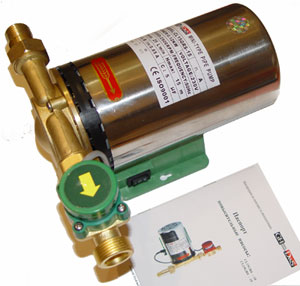
Jemix Booster Pump
In addition to giving it is used for an apartment network. This is especially important for owners whose meters are located above the fourth floor. Standard food, but an uninterrupted power is required - if we are talking about an apartment. maximum temperature - 110 C, pressure 18 m. Price - 5600 rubles.
Grundfos Booster Pump
Leaders in pumping equipment. The price of 13 thousand rubles is most likely due to the brand, since some characteristics are inferior to inexpensive analogues - a pressure of 9 m, a flow rate of 1.8 cubic meters. m / hour. The model uses cast iron and stainless steel, which makes the pump durable. A substantial warranty is 2 years.
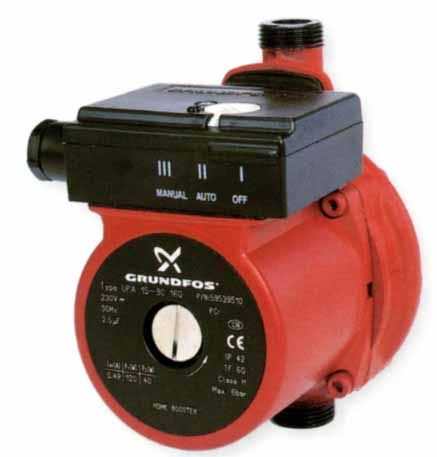
Booster Pump E.SYBOX
Italian manufacturer of pumping equipment for private residential buildings, cottages, production. Naturally, the characteristics are high: productivity - up to 5 cubic meters. m / h, head - 50 m. Lower carrier temperature - 40 C. The average cost is from 35 thousand rubles.
The pump for own needs is carefully selected. Overpay for functions that turn out to be unclaimed in the country - it makes no sense. For a house or apartment, on the contrary, a more powerful unit is required, otherwise what is the point in a working pump if it is not able to squeeze the required amount of water "uphill"?
Where to install the booster pump in the water supply system
To begin with, the installation scheme is thought out depending on the number of equipment and points of drawdown. As a rule, the pump is installed in front of household appliances or a boiler. For trouble-free use of water in the bathrooms, the installation location will be behind the storage tank. The pump does not do without a bypass - a bypass line. The unit serves to increase the existing pressure, and does not replace a completely circulating pump.
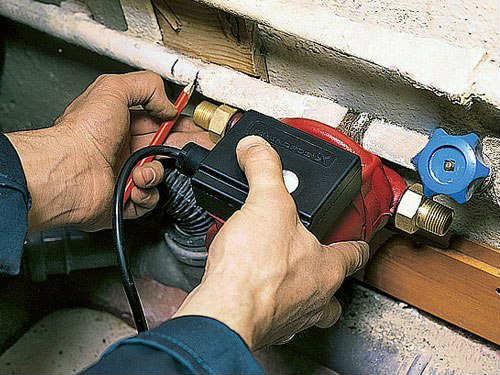
Connection is easy:
- At the insertion point, a water pipe is dismantled.
- The booster pump is installed using flange or coupling connections, of course, using a seal - rubber rings, tape-fum and other things.
- A bypass with a ball valve is welded on the same line.
Does the washing machine and dishwasher shut off periodically? Are the neighbors from the first floor suffocating from the heat, and on the eighth have to wrap themselves in shawl? In the garden area, almost no water flows from the hose? All will help out a booster pump for the water supply. By the way, if there were no pumps, people would still use wells - “cranes”, carry water from the nearest river and carry buckets.
The booster pump for water is an essential part of industrial circuits and household communications. If the pressure or flow rate of the liquid in the water supply is not enough, use the installation to create parameters on request. Boost pumps for water of various capacities and configurations are designed to work with various water conduits.
Varieties of units for increasing and stabilizing fluid pressure
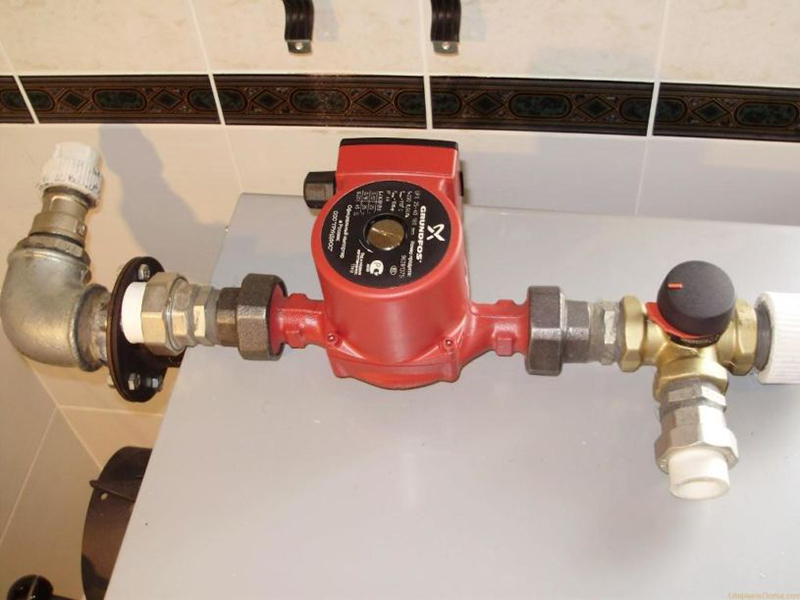
The line of injection units is presented by functionality:
- circulation models;
- pressure boosting units;
- pumping stations.
Circulating devices are devices built into a closed ring to ensure flow movement. These units are equipped with heating systems that do not provide for the analysis of water.
Pressure plants maintain a stable pressure in the pipeline at a varying flow rate.
Pressure boosting stations perform both work simultaneously. The set uses 2-4 units, one of them is the main one. A domestic installation consists of a battery tank and one unit.
For pumping cold and hot water, pressure boosting systems in different designs are used. To work on hot water, the model must withstand constantly elevated temperatures, and the engine must be cooled forcibly. The cost of installations for domestic hot water is significantly higher than for cold water.
Criteria for choosing a plant for increasing pressure in the water supply
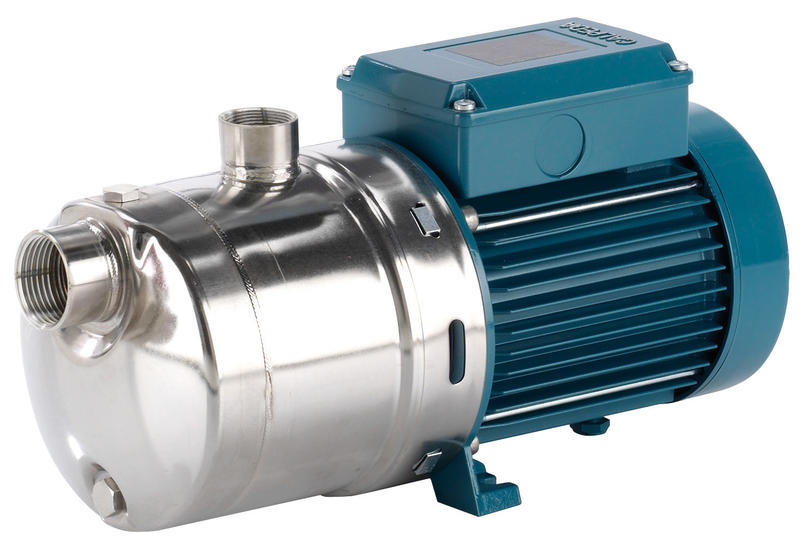
Have you heard the expression - "station of the second rise"? This means that the water extracted from the source in one way or another should be directed to the consumer with the desired flow rate and pressure. The boost booster pump performs this function.
The pumping device provides a backwater in the fluid line during pumping. Boost pumps for cold water supply at a variable flow rate are switched on periodically, when the analysis of the agent increases, the pressure in the discharge line decreases.
For reliable operation of the line, a primary and backup pumping unit with parallel connection are provided.
Why it is worth giving preference to the pumps "Grundfos"
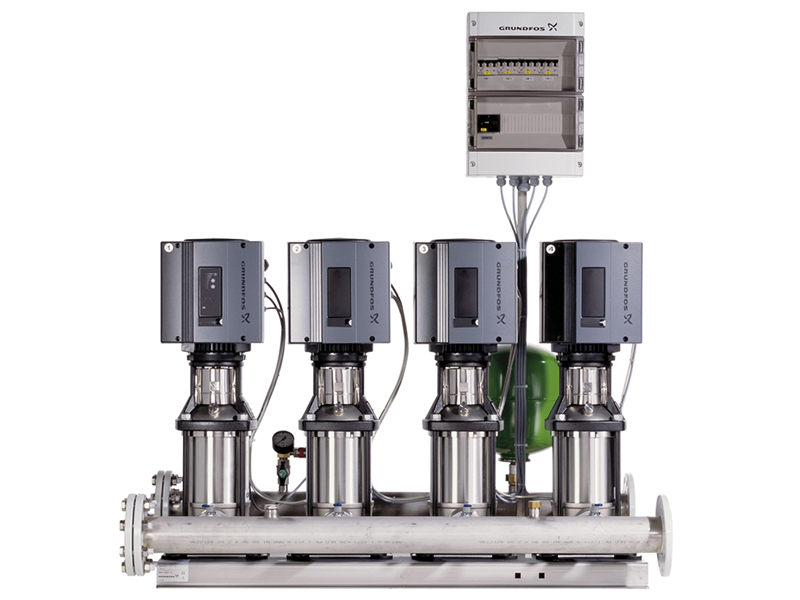
An example of industrial high-pressure stations is the Grundfos Hydro Multi-E, Multi-S, MPC series. The highlight of the devices of a well-known manufacturer is the installation on a single frame of 2-4 units with automation devices. One of the devices works stably, as forcing, with constant parameters. The backup booster pump for the water supply is connected as needed.
The station operates in automatic mode. Equipment with a capacity of up to 30 kW creates a pressure of up to 16 bar and a capacity of up to 1000 m3 / hour. The line has miniature kits with 0.37 kW engines, a flow rate of 1 m3 / h and a column height of 20 meters. The equipment is mounted in a cabinet, equipped with an automatic control function and a memory card.
The advantage of the boosting units of the Multi Grundfos series of any power are the preferences:
- reliability;
- the possibility of remote automatic process control;
- energy efficiency;
- soft start excluding "water hammer".
Circulation plant integrated in the hot water supply
DHW performs the following tasks:
- forced movement of the heating agent in the heating system of the house;
- maintaining pressure in the domestic hot water supply system;
- replenishment of the heating system in case of violation of the water balance.
According to the purpose, the circulating apparatus cannot replace the booster for hot water. If the station is included in industrial heating, both types of pumps are used. Danish booster pumps for hot water are multifunctional, adapted to variable parameters. Grundfos company is a world leader in the development and implementation of water technology in the domestic and industrial segment.
Providing country water consumption
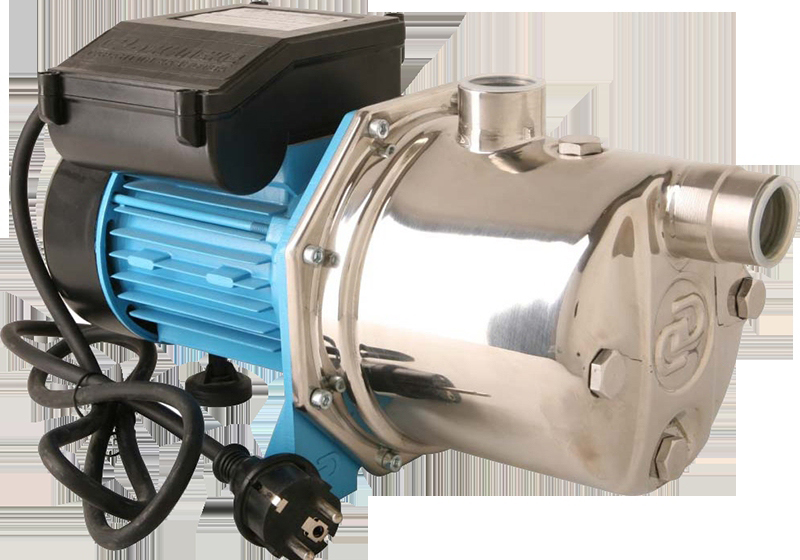
The use of devices to increase the pressure in the country and in a country house ensures the operation of the water supply system and irrigation system. The Dzhileks Jumbo 60/50 P station, a Russian manufacturer, copes well with this task. A pressure of 50 meters is quite suitable for irrigation, and 6-7 thousand rubles for a booster station is an acceptable price.
Assortment of blowers
The catalog of injection pumps for various schemes from renowned manufacturers allows you to select the desired unit.
- Wilo PB - the universal device for hot and cold water supply. The device is single-phase, flow rate up to 4.5 m3 / h, pressure 20 meters, operates in manual and automatic mode. The price is 266-6400 rubles. The best models are the Comfort series.
- DAB is an Italian brand. The devices are reliable and adapted to unstable power supply parameters.
- Termica TL PI is the ideal unit for the home. Network power, pressure 10 meters, pumps liquid up to 60 degrees, costs 3,700 rubles.
- Jemix is \u200b\u200bused in an apartment building on hot water supply, creates a pressure of up to 18 m and pumps an agent with a temperature of up to 1100 C. The device costs 5600 rubles.
These are far from all the models used to increase water pressure in highways and local water conduits.
Need to choose boosting equipment - contact!
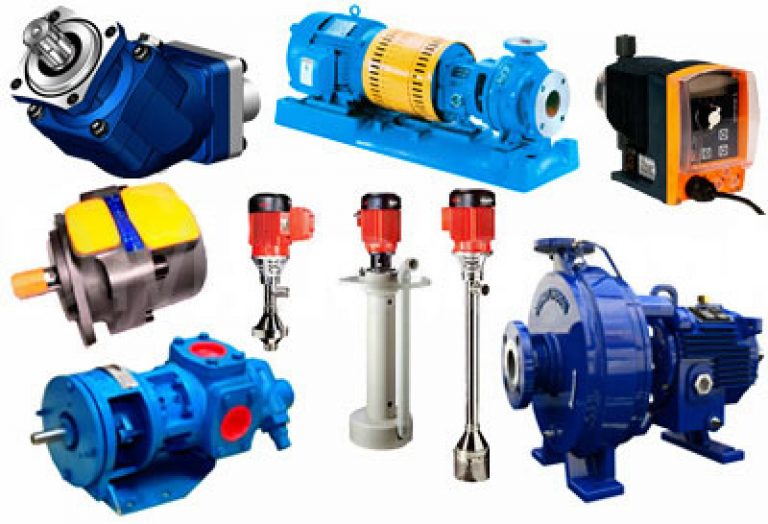
The listed pumps and other interesting designs can be purchased at our company. Call by phone, and a specialist will help you make a choice. We can offer the latest developments of world-famous companies and budget options for reliable Russian technology.
Booster pumps for water are an integral part of water supply systems. Such installations are necessary for buildings with no centralized water supply, or when the level of water pressure in the water supply is insufficient for the normal operation of household appliances.
Booster pumps are often used for individual or central heating systems. Increased pressure of hot water improves the quality of heating systems.
1 Device and scope
Booster pump for water supply - a robust monoblock design, the main elements of which are a pump and an engine. For the manufacture of parts of the flowing part and the working case, constantly in contact with water, durable anti-corrosion materials are used - cast iron, brass or stainless steel.
The housing of the working part is open on one side only. A front suction bell is located above the pump shaft. The feed bell is placed over the shaft.
Models with a hydraulic accumulator or a membrane tank are more productive for water supply with a constant lack of the necessary pressure. The membrane tank accumulates a supply of water, depending on the volume. When cranes or household appliances, such as boilers, washing machines, and dishwashers, are turned on, this supply is used first.
Thus, the local highway is provided with the necessary starting amount of water. As it is used, the pump fills the tank.
Boost pumps and pumping stations are used:
- for raising pressure and transporting water in a house or industrial building;
- in main pipelines, at waterworks;
- to increase the pressure in the production plant;
- for transporting fluid to a fire or cooling system.
1.1 Types of booster pumps
Depending on the control method, pumps to increase water pressure are:
- automatic
- tame.
Pump operation with manual control controlled by the operator. Turning on and off is forced.
Aggregates with automatic control equipped with water flow sensors. They work when the crane is opened and ensure the installation is turned on. After closing the tap and stopping the flow, the sensor turns off the pump.
Depending on the technical specifications and working conditions, distinguish these types of pumps:
- surface centrifugal;
- jet centrifugal;
- vortex.
Principle of operation superficially centrifugal pumps such: a working impeller is installed on the driving rotating shaft, in front of it there is a suction pipe, which is located at the bottom of the pump casing. The impeller's task is to create a radial movement of water from the center to the periphery. Hydraulic losses are minimal.
Inside the impeller there are radial blades, which, when the water moves, convert mechanical energy to pressure and flow acceleration. After exiting the impeller, water is directed into a spiral, with the help of which it enters the conical diffuser. There kinetic energy is converted into energy of pressure.
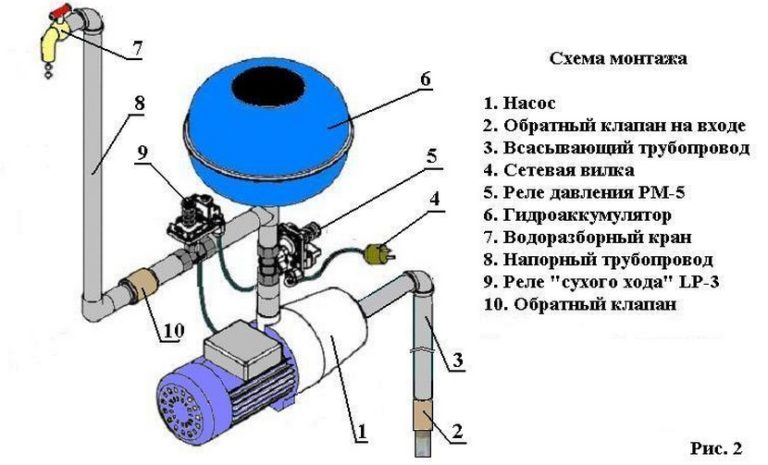
Centrifugal Jet Pumps - A type of centrifugal pump. An ejector is installed inside the casing, which provides a self-priming effect. Part of the fluid pumped by the pump enters the discharge pipe. The part that remains is recycled with an ejector that attaches to the suction chamber. Recirculation creates a vacuum inside the suction chamber, which contributes to the self-absorption of water.
There are such types of pumps in which the suction chamber with the ejector is carried out in a separate unit and connected to the pump by two pipes. The block can be lowered into the well.
Vortex pumps have radial blades on the periphery of the impeller. They transfer mechanical energy to the pumped water. Thanks to the device of the blades, they provide a radial recirculation of water that enters the pump. Blades and double channels are located on both sides of the impeller. Between them, water is recycled.
Numerous blades promote energy transfer, this leads to a gradual increase in water pressure. As a result of this work, the flow at the outlet is uniform, with high pressure.
1.2 Features and Benefits
To reduce the noise level, most household boosters have a rotating rotor located directly in the pumped liquid. Such designs are called wet rotor models.
All elevators are small in size, so they are easily placed on the pipe. Easy to operate in private homes and apartments.
Despite the fact that the pumps slightly increase the pressure in heating and water supply systems, even such a minimal increase in pressure improves the circulation of the coolant in the batteries and ensures the normal operation of boilers, washing machines and dishwashers.
The liquid with which the enhancers work can have a temperature in the range of 10-100 degrees. The air temperature should be below 40 degrees.
Pumps for increasing water pressure have several advantages:
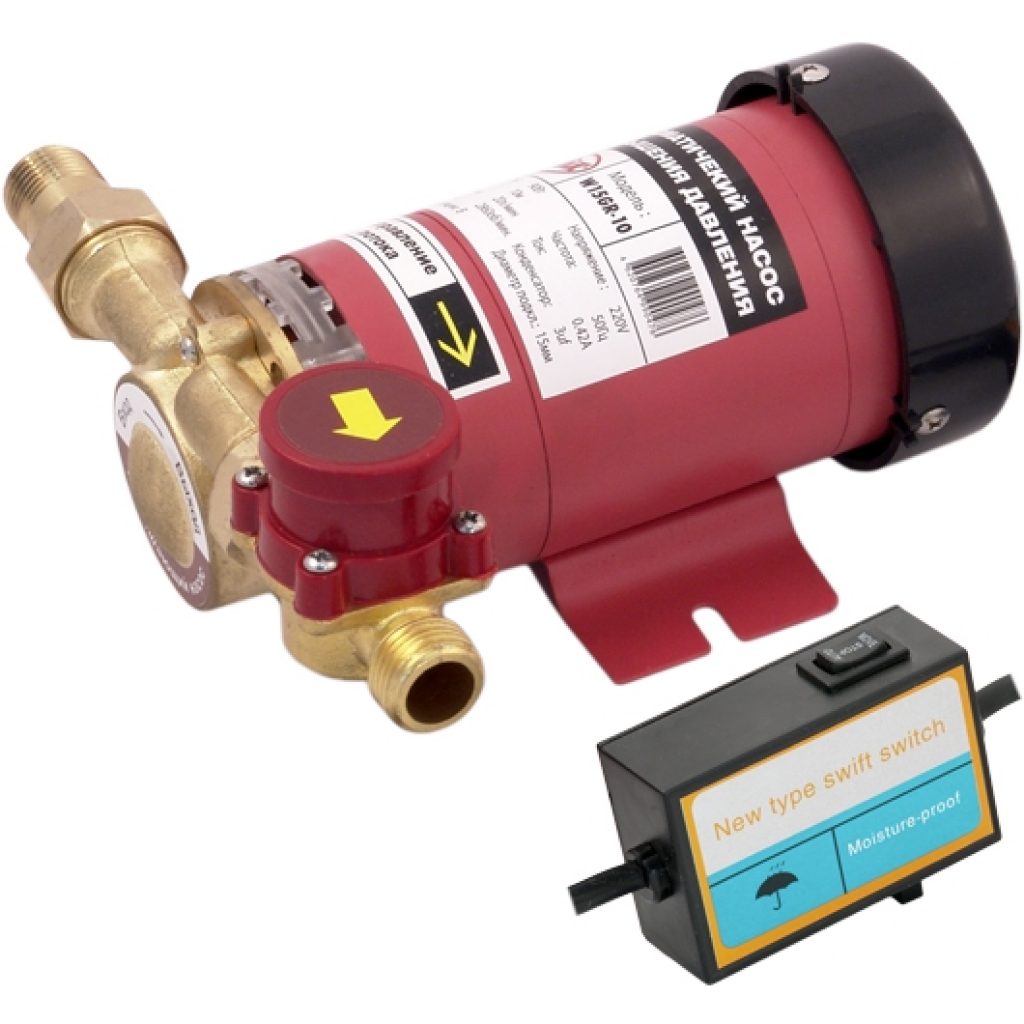
1.3 Efficiency
The reason for the weak water pressure is not only clogging of the filters and overgrowing of pipes. Often a weak head is the result of a large intake of water at a certain time. If apartment buildings quite easily cope with a similar problem, then for private construction autonomous water supply systems are simply irreplaceable.
The device of the pumping unit, in the complex of which the drive is included, eliminates the problems of general water intake. Systems using surface and submersible pumps have many advantages.
During the installation of such equipment on the highway, often with excellent performance indicators there is no work efficiency.
This happens because when the booster is installed, the water pressure does not increase, since water is drawn from different points. As a result, the amount of water that enters the pump will constantly decrease. Especially if the neighbors below also installed a pump to raise water. As a result of lack of water, the pump starts to work as much as possible. This leads to premature wear of parts and reduce the life of the product.
To achieve work efficiency and increase pressure, it is recommended to install storage tanks in parallel.
2 How to choose the right pump to increase the water pressure?
When buying equipment to select the optimal model, you need to pay attention to its capabilities.
The main selection criteria:
- operating temperature;
- power;
- noise during operation;
- way to connect to the water supply;
- pressure;
- bandwidth.
In order to maximize the operating time of the unit, it is necessary to avoid its operation at maximum permissible temperatures.
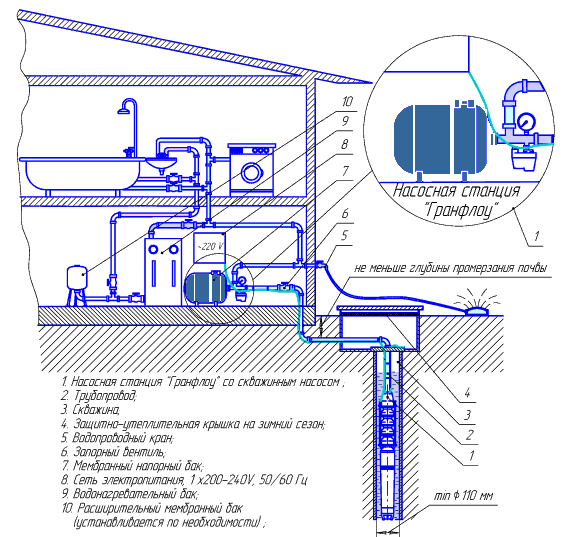
If you need to slightly increase the pressure of water at a short distance, you do not need to buy a very powerful mechanism. A high power engine consumes more electricity. It is more profitable to purchase a less powerful model that can easily cope with such a task.
The way to connect to the water supply plays an important role, because basically the supercharger is connected covertly so as not to spoil the interior.
For a small room, a noise level indicator is very important. When installing equipment in a basement or other enclosed area, noise during operation does not play a special role.
One of the most important selection criteria is maximum head. Power is not always an indicator of high pressure. There are models with low energy consumption that can create high pressure.
A direct indicator of the filling speed of the required capacity is the throughput. Measured in cubic meters per hour.
3 Installing booster pump
For the effective operation of the unit, you need to connect it correctly. When installed on a common line in a pipeline, the pressure will increase on all branches of the pipeline at home. Since the area of \u200b\u200bthe pipes is large, the pressure created by the supercharger in the separated sections of the pipeline will be less.
As a result of this, the pump runs at full power, and the efficiency of such work remains negligible. Especially if water is taken from several points at once. Installing a unit with more power will not be profitable in terms of power consumption and noise during operation.
A suitable and low-cost installation option is to install on the pipeline in front of the consumer. For whom the constant support of the necessary pressure is important. With this installation, the pressure on the other lines will not change.
Sometimes it’s better to install several units at once with a small capacity on the necessary sections of the pipeline than installing one powerful unit on the entire pipeline.
In each individual case, the length of the pipes, their cross-section, and the pressure level are measured. This allows you to determine the maximum parameters.
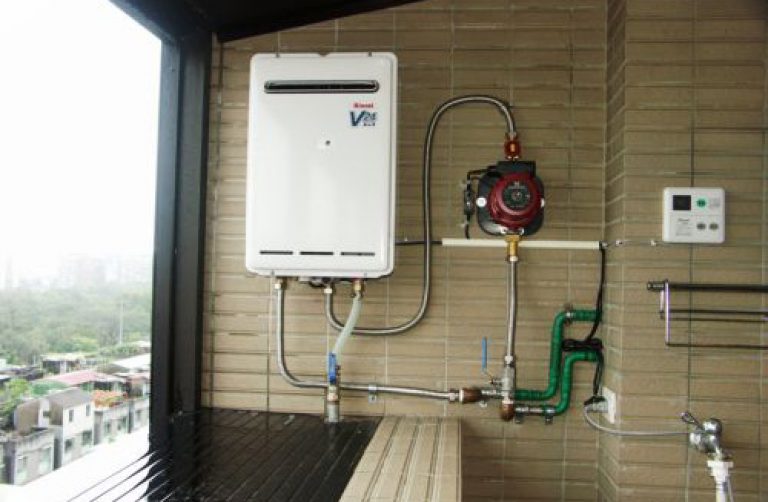
Installation of equipment is not difficult:
- First make sure that there is a power outlet at the location chosen for installation.
- Further on the places of the cut marking is done.
- The water supply is shut off and its residues are drained from the pipeline.
- The pipe is cut and an external thread is installed.
- Adapters are screwed.
- Fittings are screwed.
- Using a three-core cable, the unit is connected to the shield. In this case, an individual machine is installed.
- The joints are checked for leaks.
After that, a test test is carried out. The first start of the pump is carried out only after the water circulation resumes. If the verification is done by specialists, an act of verification of booster pumps is drawn up.
Thus, this equipment can eliminate low water pressure. But for its maximum efficiency, you should choose the right model and take into account all its characteristics during installation. To control the technical condition of the unit, it is also very important to install in an easily accessible place.
3.1 INSTALLATION IN THE APARTMENT OF THE SURFACE PUMP GPD 15-9A (VIDEO)
Weak water pressure in the tap can occur for various reasons. In addition to clogged filters and pipes, this can be a decrease in pressure in the system. This is especially true of private households during busy hours. Boost pumps for water supply can effectively solve this problem. With their help you can support optimal system pressurewater supply and provide comfortable operating conditions for showers, washing machines and dishwashers, boilers, etc.
The principle of operation of the booster pump for water supply
Boost pumps for water supply are a single structure consisting of elements such as pumps and electric motors. All parts of the applied equipment are made of high quality materials (cast iron, stainless steel, brass, ceramics) and are highly resistant to corrosion. The pump casing is hidden under water, where the front suction and radial feed sockets are additionally located. Boost pumps for water supply are manufactured exclusively with Wet rotorwhich, in contact with water, cools the rubbing parts of the structure. This ensures almost silent operation of the device, increasing its life.
![]()
For private homes, as a rule, they choose household models that are compact in size, economical, and easy to control. These devices work with liquids, the temperature of which can be from -15 ° С to + 100 ° С. Pipes for water supply systems can be used in this very variety: metal-plastic, cast-iron, polypropylene, steel, etc. However, experts recommend operating the equipment at a temperature not exceeding + 40 ° С. The distribution of water supply at home should include the installation of a pump in specially equipped rooms.
Pumps according to the type of control they are divided into:
- hand held
- automatic.
Automatic devices can turn on when the source of water intake is opened. They are most popular in device systems. autonomous water supply. Unlike manual pumps, automatic pressure boosting pumps save energy and water.
- noise level,
- device power
- performance,
- maximum water pressure.
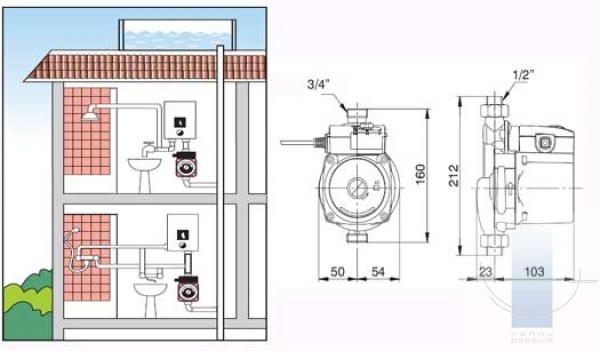
The indisputable advantages of using booster pumps include:
- the ability to work with liquids in a large temperature range;
- ease of connection and maintenance,
- light weight
- compact sizes
- low noise during operation;
- ability to constantly maintain optimal pressure in the system.
Choosing booster pumps for water supply, you should definitely think about their performance. If it’s about installing the device on common highway, there is a risk that the pump will run at full capacity, but the debit of the water will fall. In turn, this will entail rapid wear of the device and frequent repairs. In such a situation, the right step would be to install a booster pump with a storage tank. This measure will ensure the required parameters of the water pressure in the tap. The savings bank can be connected directly to the highway itself. The weak point in installing such a system is the complexity of the assembly. It is more time consuming than with the surface version. pumping station. When installing a submersible booster pump on automation, consult a specialist on how best to install membrane tank. Incorrect connection of the pressure sensor, pump motor, dry run protection system can lead to damage to the device.
In any case, prior to installing the submersible or surface pressure boosting pump, draw up a wiring diagram. If necessary, consult with a specialist. After all, improper installation is not a guarantee basis for free repair of equipment.











